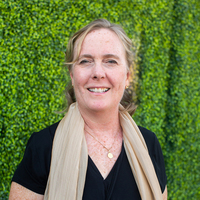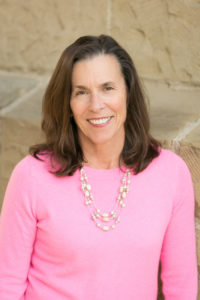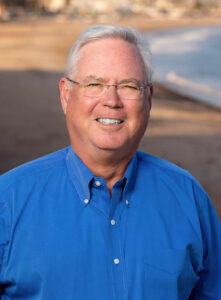This article will highlight how some of our local nonprofits are responding to the unknown new reality which will emerge from post-vaccine challenges. One thing is for sure, uncertainty will continue to weave through our every decision and prediction.
Let’s begin by taking a look at how McKinsey & Company puts a positive spin on this unnerving situation. In their recent article, Delighting in the Possible, authors Zafer Achi and Jennifer Garvey Berger talk about how leaders will need to move from managing the probable to leading the possible. They recommend broadening our range of options by breaking out of familiar patterns. This new reality will demand a whole new approach. However, the authors warn that “leading the possible involves coping with our own anxieties about an unknowable and uncontrollable world.”
Achi and Berger assure us that treating our challenges with new mental models “we can unlock solutions of immense creativity and power.” The authors recommend three new habits of mind when approaching challenges as possibilities rather than probabilities.
>>Ask different questions.
Rather than relying on our typical patterns of thought, let’s slow down the process by asking questions that take in the full range of data resulting in a much wider range of options. For example, ask what you expect not to find or how you can shift your core assumptions.
>>Take multiple perspectives.
We can’t predict when our next vital idea will emerge, but we can support an expansive view of our present conditions. Imagine that the data we see might not be all the data available. Considering multiple perspectives opens up our field of vision.
>>See systems.
This is about seeing patterns of behavior and then developing small experiments in unexpected places to open up new possibilities. Try to find a wider, more systemic view of the present. For example, try holding seemingly opposing ideas without feeling the need to reconcile them. Resist the temptation to find the best solution; instead find several good but different solutions and experiment with them. Elements in a system can be connected in ways that are not immediately apparent.

Sigrid Wright, CEO Community Environmental Council
The Community Environmental Council (CEC) is expanding during this pandemic.
The CEC sees significant growth in their future as a result of increasing demands to solve our climate crisis. They will expand their footprint by 8,000 square feet by moving into a new facility, enabling them to ramp up their programming and better engage with the community. CEC’s CEO, Sigrid Wright, explains “we can’t pause our efforts as we seek to advance rapid and equitable solutions to the climate crisis.
Eventually we will need this space to build regional capacity and expand our outreach to the community.” Their staff, which they plan to increase by 50 percent, is working remotely now but they plan to create a hybrid format in the future while maintaining some of the digital aspects of their current pandemic work model.
Wright further explains that “CEC is leaning into this moment. Over the last year we’ve been crafting an ambitious strategic plan to ensure that this will be the decade of unrelenting, focused and courageous climate action on the Central Coast. So, we welcome and encourage tax-deductible donations more than ever before.”

Jan Campbell, E.D. Domestic Violence Solutions
Domestic Violence Solutions (DVS) plans to return to in-person service.
DVS Executive Director, Jan Campbell, explains that their shelters have remained open during the pandemic, but “client advocates have been doing case management remotely and by the end of March, once they are vaccinated, they will go back to in-person assistance (with proper PPE).”
Campbell recommends that nonprofits prepare for some resistance during reopening and to remain transparent with staff, the community and the board. “Don’t get out in front of your board,” she urges. She says supporters can visit their website for a list of needed items and also to donate cash for general operating support.

Margie Yahyavi, E.D. Santa Barbara Education Foundation
Santa Barbara Education Foundation (SBEF) will continue staggering employee shifts for now.
SBEF Executive Director, Margie Yahyavi, explains that “staff is currently staggering our time in the office so that everyone has their own days and times. We will continue with this model until everyone has had the opportunity to get vaccinated.” Yahyavi says that in the post-vaccine reality her intention is to give employees the option of working from home or in the office. However, “all employees who want to return to the office will be required to be vaccinated.”
They are being very careful at the office by making hand sanitizer available and making sure windows are open when staff are in the office. They check with each other if something arises and honor each person’s comfort level in response to each situation. They are working closely with the Santa Barbara Public Health Department and consulting with other executive directors. In the near future they will convene a formal strategy group comprised of staff and board members. “We are working as hard and as diligently as we ever have,” explains Yahyavi. “We need the financial support of donors more than ever.”

Alana Walczak, CEO CALM
CALM’s re-opening planning is coordinated by their Senior Management Team.
CALM is conducting most services via telehealth at the present time. However, they have clinicians available in all three offices (SM, Lompoc, SB) to provide in-person services when clinically warranted. As a trauma recovery service provider, they will always emphasize in-person services whenever safe and appropriate to do so. However, they recognize that telehealth services will likely be part of their service delivery model going forward. As such, CALM is beginning discussions now about how a tailored hybrid model of mental health service provision can best meet the needs of their clients in 2021 and beyond.
CALM CEO, Alana Walczak, explains that “as part of the essential health care workforce, CALM has encouraged our staff to get vaccinated at the earliest opportunity. Many staff are on the list for the vaccine or have recently received their first doses.” She adds that “additional safety protocols – including masks, social distancing, and increased sanitizing – remain in place for CALM offices countywide.”
All of us in the nonprofit sector are working hard to meet the needs of our clients, while also maintaining the health and safety of our staff. The only advice I can offer to other nonprofit organizations is to stay abreast of CDC and Public Health guidelines and support your staff by creating the safest, most sensible work conditions possible. Clarity, communication and flexibility are key as we all navigate changing conditions.
CALM remains strong and steadfast in providing support services to children and families throughout Santa Barbara County. As the stressors of the pandemic, racial injustice and community violence continue, we are witnessing a tremendous increase in mental health needs. CALM’s work to prevent trauma and build resilience has become more important than ever. With investment from our supporters, we are responding to a rising level of service requests and an intensification of trauma needs. Financial support from donors is crucial to making lasting change in our community.

Scott Whiteley, PhD, CEO Council on Alcoholism & Drug Abuse
Council on Alcoholism and Drug Abuse (CADA) is actively addressing current pandemic issues and planning carefully for post-vaccine reopening.
CADA Executive Director, Scott Whiteley, PhD, explains their well-crafted operation and plans like this: “In response to the COVID-19 pandemic, last March, CADA pivoted its service delivery to a remote platform. The acquisition of additional laptops and other mobile devices enabled the Agency to continue to deliver the vast majority of its programs to both existing and new clients at pre-COVID service levels. With the exception of clients being treated at the live-in Adult Residential Treatment Services facility, and those who require in-person services (like drug testing), all others are being effectively served through Telehealth and telephone sessions.
During this challenging time, CADA has not only retained all staff but has continued to hire new staff. Most staff have been working virtually, with a few in administrative positions staggering office visits to accomplish necessary on-site tasks.
At the onset of this health crisis, CADA’s Management Team immediately began developing formal, tightly prescribed protocols for reopening, staying close to Public Health for guidance on the ability to do so. Now, with a vaccine on the horizon, CADA is fine-tuning its reopening plan accordingly.
>>We will encourage but not require staff to receive the vaccination and carefully evaluate the circumstances of those staff who choose not to be vaccinated, reserving the right to make position adjustments if that is in the best interest of other staff and clients.
>>Once all staff have had the opportunity to be vaccinated, CADA will begin to return to the workplace in phases. Staff will return first, location by location, to ensure new workplace protocols are going smoothly. If a staff member is not comfortable with returning to their workplace, we will do our best to accommodate his/her continued work-from-home arrangement.
>>We are in the process of reconfiguring all workspaces to enable social distancing in shared areas and will be providing protocols regarding interaction with others in elevators, break rooms, the kitchen, hallways, etc.
>>CADA facility cleaning protocols will be substantially stepped up by both contractors and on-site staff, and additional hygiene safety products like hand sanitizer and disinfectant wipes will be amply provided at all workplaces.
>>All staff will complete a daily health questionnaire and do a self-temperature check prior to entering their workplace.
>>Face masks will be required for as long as the current federal request is in place unless a staff member is confined in a personal, closed-door space, at which time they may temporarily remove their mask.
Communications regarding COVID protocols have been regular since the beginning of the pandemic, including weekly updates for managers who cascade those updates to their teams. The first week in February, the Agency is launching a monthly e-Newsletter – CADA Connected – to provide staff with an additional source for news and other timely information, including COVID-related messages. The goal is to deliver clear and consistent messaging for staff to share with clients and the greater community.
All nonprofits in Santa Barbara County are feeling the impacts of this unprecedented health crisis, which is causing the community to re-think not only their daily operations but their traditional funding models as well. For CADA clients – youth, adults, and their families – the isolation and uncertainty of this prolonged situation can be particularly challenging as they strive to stay focused on a path of recovery.
CADA encourages volunteers, donors, the media, and others to step up and stay actively engaged with our local nonprofits. Never has your support and encouragement been more critical to our collective ability to continue to work together to keep this unique place we are fortunate enough to call home, strong and vibrant.”
